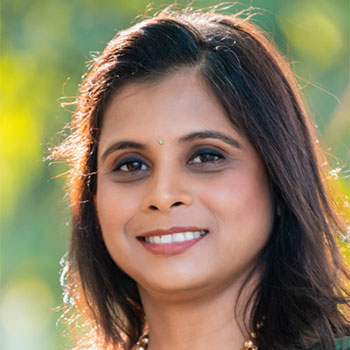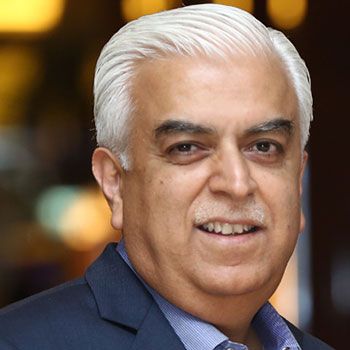Human vs. Technology: Who is winning?

The relationship between humans and technology epitomises a 'love-hate' dynamic. While technology enhances our lives, excessive dependence can lead to detrimental effects. This intricate relationship involves both collaboration and contention. As humanity has progressed, technology has become integral to our daily existence, to the point where many individuals exhibit signs of addiction. The adage, “Technology is a useful servant but a dangerous master”, aptly captures this sentiment. It prompts us to consider whether, in our pursuit of a technologically advanced future, have we overlooked the essence of our humanity? Corporate Citizen spoke to technology experts to gain insights into this relationship and its future implications
Synergy of humans, minds and machines
DIVYA MOMAYA, founder, MentorMyBoard

For us, technology acts as a catalyst for innovation and efficiency, bridging the gap between aspirations and boardroom excellence. Furthermore, advanced technologies have pushed us to dream beyond boundaries, enabling us to extend our reach beyond local confines. This expansion has fostered a nationwide network of directors and thought leaders, with ambitions now set on a global audience. Technology has empowered us to provide access to elite corporate governance insights in the professional world. Our platform is built on Angular technology secured by Amazon Web Services (AWS), and integrates AI to enhance user experience.
However, this does not mean we have lost the human touch or that technology is replacing humans. We remain vigilant against over-reliance on AI, which can stifle human creativity—an essential element for promoters and founders. In the boardroom, where unique insights and personal experiences are invaluable, our platform encourages original thought and critical thinking, balancing technological use with human interaction. We view technology not as a replacement for human intellect but as a collaborator and facilitator. Even in our offline programmes, technology extends our interactions to audiences beyond the room. The future is integrative, where technology and humanity coexist synergistically.
Let’s use technology ethically and mindfully
NIRANJAN GIDWANI,certified board director (MCAINDIA), board advisor, ESG director

With over 34 years in the field, I recognise that technology, when ethically harnessed, propels societal and economic growth. Influential leaders understand and leverage technology's potential to drive progress. The internet, as a dominant communication tool, along with artificial intelligence, edge computing, robotics and blockchain, has significantly impacted our daily lives. Quantum computing is poised to further revolutionise various sectors. However, the ethical application of these technologies is crucial to prevent misuse and ensure they serve humanity's best interests.
Despite the advantages, there are notable concerns. Excessive screen time and social media usage have been linked to negative effects on mental health, including increased stress, anxiety and depression. To maximise technology's benefits while mitigating its drawbacks, a balanced integration of human creativity and technological tools is essential. This synergy can lead to enhanced productivity and innovation. Establishing boundaries, such as limiting non-essential screen time and promoting digital literacy, is vital to prevent potential cognitive decline associated with overexposure to digital content. Ethical and mindful use of technology is imperative. By implementing a disciplined approach, we can harness technology's full potential to create a more prosperous and equitable world.
Tech's true power lies in users' hands
PURUSHARTH MALIK,tech blogger and digital marketing expert

I have always regarded technology as a smart assistant. It undoubtedly makes our lives easier, faster, and more efficient by solving complex problems and unlocking new opportunities. However, if we allow it to take over without control, it can interfere with our human touch. Therefore, I perceive it as a tool that is only as good as the person using it.
As a digital marketer, tools such as analytics platforms, scheduling applications, and AI-powered content-assisting tools like ChatGPT are invaluable to me. They make my work more organised and save me hours, thereby improving my productivity. On a broader scale, technology has facilitated global connections, remote work, and innovations we never imagined—such as working from home and online learning.
Technology can spark creativity, but it can also lead to complacency if we rely on it excessively. Let's be honest—AI tools provide quick solutions, but they cannot think like a human. Sometimes, people become so dependent on templates and tools that they cease thinking outside the box. Additionally, distractions like social media notifications are unhelpful when attempting to focus on creative work. The key is to use technology as an aid, not to depend on it entirely. In my view, it's a balance.
The future will involve humans and technology working together. AI and robotics will become even more advanced, but we must remain vigilant. By keeping ethics and creativity at the forefront, the future appears promising—technology will be our partner, not our competition.
Technology – a catalyst or a hindrance?
SRINIVAS SHEKAR,CEO and co-founder, Pantherun Technologies

Technology serves as a formidable ally in crafting a brighter future. When used thoughtfully, it can tackle some of the world's most urgent challenges. By embracing its advantages and managing its impacts judiciously, we can ensure it remains a positive force in society.
At Pantherun Technologies, we leverage cutting-edge innovations to bolster data security and streamline operations. Our flagship development is a patented AES encryption system, engineered to safeguard data both at rest and in transit. This real-time encryption is particularly suited for edge devices, offering robust security without compromising performance—a crucial balance in today's interconnected landscape.
We also incorporate artificial intelligence into our encryption strategies for advanced Internet of Things (IoT) solutions, Industrial Ethernet technologies, and sophisticated encryption protocols.
Technology has a profound impact on human creativity, acting as both a catalyst and a hindrance. While technology offers incredible resources and opportunities for collaboration, it also poses challenges that can diminish original thought. The key lies in finding a balance.
The future will depend on how we choose to integrate technology into our lives. If we focus on collaboration using technology as a tool to enhance our uniquely human qualities like empathy, creativity and moral judgment, we can create a world where both humans and machines thrive together.
Technology is in the air
RAMA KRISHNA,co-founder and CEO, EndureAir

Technology is a powerful enabler that transforms ideas into reality. We perceive it as a catalyst for addressing pressing issues, not merely as a tool. When applied thoughtfully, technology can revolutionise industries, enhance productivity, and significantly impact society.
Currently, we are leveraging technologies such as aerodynamics and VTOL (Vertical Take-Off and Landing) systems, designed to maximise efficiency and performance, ensuring smooth aerial operations. Integrating AI and machine learning with analytics and navigation enhances drone autonomy and decisionmaking. Collectively, these technologies have enabled significant advancements in disaster management, high-altitude operations, and logistical delivery.
By automating repetitive tasks and providing resources for ideation and execution, technology enhances human creativity. However, over-reliance may sometimes impede creative thinking. For instance, excessive automation in manufacturing can lead to a loss of practical knowledge. Therefore, balancing innovation with the human touch in design is crucial to remain focused on the core issues we aim to solve. We ensure our technology complements rather than replaces creativity. Achieving this balance involves fostering collaboration among engineers, researchers and designers.